Janine Elliot takes a listen the SweetVinyl SugarCube SC-1, a device aimed at removing the clicks and pops from your vinyl collection and costs £1500.
I first got interested in the idea of scratch removal equipment when a child playing some damaged records and not able to enjoy them to the full. I would record them onto reel-to reel-tape and manually remove them using a razor blade and splicing tape. In 1978 I was introduced to a very clever click reduction system under development by a major turntable manufacturer of the time, Garrard, their MRM101 Music Recovery Module (in 1979 priced at £130.78). Later employed at the BBC in the record library I was again introduced to this device, copying LPs, EPs, and 78s onto reel to reel tape or cassette for use on air or for producers’ offices. However, the limited design technology of the day meant clicks and scratches were never totally removed, especially those below the peaks of the musical content, though it was a brave attempt. It even included a built-in MM phono-stage. This early digital design was being developed by the company at the same time as they were looking into designing players for Laserdiscs, both ideas sadly being dropped almost immediately. Later, digital models by SAE and Marantz bravely attempted to resolve a menacing characteristic that has existed since Edison’s first cylinder player. Today, with the use of improved digital technology for processing of sounds things are much easier, and filtering of clicks is common practice on computer-based audio recording software. However, a standalone device for your Hifi has been absent for far too long and I was excited to find out about this American product and requested a review from UK distributors Henley Audio.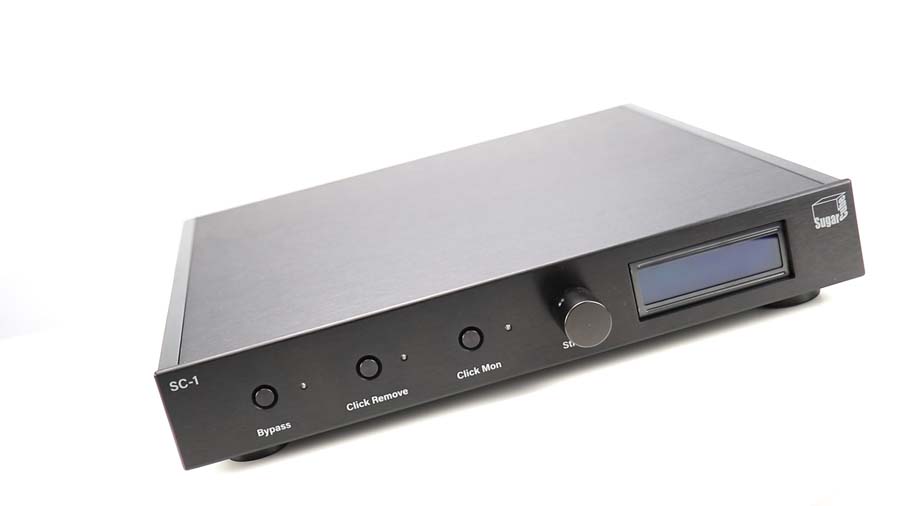
SweetVinyl is a Silicon Valley-based company, founded, by Dan Eakins and Leo Hoarty, both of whom have successfully created a number of other hi-tech companies. With a team of staff, Dan (who plays the guitar and races cars) took the idea of SweetVinyl from concept to reality, and Leo (who flies planes) and another gentleman Roger (who like me loves caffeine and music) do the digital designing of the SC-1, and the soon to appear top model the SC-2. Their first product, Sugar Cube SC-1, was first shown in the UK at the end of 2017. Coming in at £1550 the unit has a total of three processors in operation; the first a Linux CPU and the rest developed by them. Indeed, the major work is done with the software designed by them, using sophisticated proprietary algorithms to detect, isolate and remove only unwanted noise whilst not affecting the musical performance. What makes SweetVinyl SC-1 unique is that it has an updatable database of already understood clicks and pops from which to identify and remove from your damaged LP. Using an ADC (Asahi Kasei AK5572) to convert the analogue signal to digital so that it can be processed, and then a DAC returning it back to analogue (ESS Sabre ES9018K2M) the SC-1 is easy to install, requiring output from your phono-stage (i.e. line-level EQ’d audio rather than the output directly from your cartridge) and then feeding back to your amplifier via a spare line-level input. Alternatively, if your integrated amplifier has a phono-stage section one can connect it via the tape loop or aux in/out sockets if your integrated amplifier is so equipped, or perhaps between the pre and power stages of the integrated jumpers – if it has jumpers. To use the machine you simply need to press a button to initiate the 24-bit/192kHz digital clean-up process, and then turn a dial to adjust the strength of the process from 1 to 10, with “5” being standard setting. It also has a bypass mode whereby a high-quality internal relay isolates the audio signal from any digital process to make sure that you only hear the original audio, just in case you have a perfect LP. Indeed, it is simply connecting the ‘in’ RCA to the ‘out’, as it still works whether the SC-1 is switched on or off.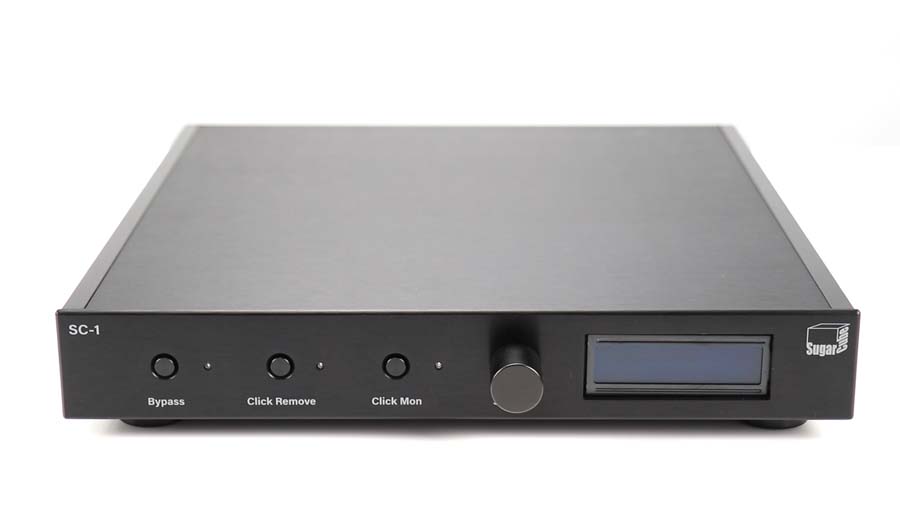
I must be old fashioned in being happy to get up to press buttons, but if you are the kind of person who needs to use their Android/iOS device to see the inside of your fridge or controlling your lights, then these guys have thought of everything so you can operate the device from the comfort of your armchair using LAN or Wi-Fi. Indeed, the unit is supplied with a USB fob and has a socket to connect to your wired Ethernet so that you can calibrate, adjust and switch the SC-1 process ‘on’ or ‘off’ from your PC as well as iOS and Android devices, via a downloadable app. The unit is supplied with a 7” record (note it is 33⅓ rpm) from D.r Feickert Analogue for automatically configuring the correct level setting, as well as to ‘tune’ up your arm/cartridge.
CONSTRUCTION
The unit, whilst only 54mm high, is actually deeper than its 304mm width, coming in at 350mm including the rear RCA’s and front knob. It is carefully manufactured from aluminium, available in anodized silver or black, looking very well thought-out for both looks as well as ease of use. It was good to see it included substantial feet, being metal with rubber O-rings, though I would rather have seen more rubber. It uses good quality chassis-mounted, gold-plated in/out RCA jacks with the on/off toggle switch on the rear plus socket for an external AC power adaptor, two USB2 and RJ45 LAN sockets plus a ‘pairing’ button to connect with your Android/OS device. At the front are the “bypass”, “Click Remove” and “Click Mon” buttons with indicators so you know when they have been pressed. The latter allows you to just listen to the crackles on their own if you missed them, and to help set up the best amount of processing. Next to these is the very prominent adjust button to select the strength of control of click reduction. On turning on the unit the screen to the right of the knob goes blank for a short while whilst its clever algorithms sort themselves out, but I wished it would perhaps indicate “setting up”, “please wait” or even tell me a joke on switch on, as the first time I turned it on I did worry that the review sample didn’t work! The user manual is not helpful in this respect, concentrating on showing you how to connect to your hi-fi and setting up the Wi-Fi and Ethernet. There is nothing to help you set up the device, though I worked out that it was best to use the enclosed 7” LP, playing side-one 3.15kHz (-10dB) tone on first use of the unit so that the electronics are optimised from the output of your phono-stage. This record is also handy for checking out wow and flutter, crosstalk and phase. After a minute and 10 seconds, it all came to life telling me it is “SweetVinyl”. Phew. I wanted to set it up initially as if the user didn’t have the ability or desire to connect Wi-Fi or Ethernet, though I did the latter options later in my review. It can be done either way; setting up via iOS or Android gives you the option to “calibrate” on the main screen of your device, so perhaps a pushbutton for “calibrate” on the front panel of the device would be useful. Once you have done it for the first time you won’t need to do it again unless you use a new cartridge or phono-stage. If you do use it connected to the Ethernet it will automatically update the drivers to improve the performance as new algorithms become available, particularly for computer sounds which can look like crackles and pops. Nice one. Their more expensive model SC-2, at around £1000 more when it comes out later in the year, will allow you to play and save your LP onto 192kHz/24bit external storage, and the Android/iOS app automatically tags metadata as you are recording the LP, including track splitting, somewhat like the Convert Technologies Plato system I reviewed in 2016.
The design is far superior to noise and click removing software from the 20th century, such as DNL, Dolby B and C, which simply work on specific frequencies to reduce the offending material, and the digital ‘peak detecting’ Garrard click remover. Very simply put, the SweetVinyl “algorithms” identify the clicks and pops before you would get to hear them, and then removes that section via it’s known database of pop/click symptoms, and “edits” the sound either side of the ‘gap’ that would have arisen, and smooths the join. A bit like clone stamping in photo editing to remove moles and wrinkles, and indeed, how I removed offending sounds as a sound engineer at the Beeb. As Dan, from SweetVinyl informed me;
“The SugarCube algorithm instead of identifying frequencies or bands of audio with problems looks for events in the time domain and then corrects the audio to remove them by interpolating the slope of the preceding audio. These repairs are so small and distinct that humans can’t perceive them and is actually how a sound engineer would remove them manually”.
Generally clicks and pops have a quick transient and easy to identify on a computer screen for you to remove them, as they look so different to longer musical and vocal interjections, but percussion instruments such as the rim of a snare drum and digital drums have very quick starts and not so easy, perhaps, for a digital algorithm to identify, though in my testing the algorithms on the SC-1 weren’t confused in any way.
“Clicks and Pops are distinct from music in that musical sounds typically have an attack and decay that look quite different over time than clicks and pops. (Music has repeating patterns while clicks and pops are isolated impulses that stand out in duration and strength.)
Our algorithm hunts in real time for candidates to repair and then applies pre-defined rulesets on these to make sure they are not music. This is pretty straightforward for most instruments – but some things can look like clicks and pops. For instance; a drumstick on a drum rim, a muted horn, where the attack and decay are roughly symmetrical. We have identified many of these and update the software rules as we find corner cases”.
Indeed, I decided to use good quality percussion based LPs in my reviewing to see if they were affected in any way. Dave Brubeck’s ‘A Cut Above’ direct cut disc has some great percussion from his son Dan. Listening just to the “Click Monitor”, all I heard was a few scratches and no drumsticks. When setting up the ideal setting for your LP it is useful to listen just to the crackles, so you can adjust it to not include anything other than a clear undistorted click, pop or crackle. I also listened to complex synthesiser music with square waves that have sudden transients similar to crackles to see if that confused the unit. It didn’t!
SOUND QUALITY
I was a little worried that after praising analogue vinyl over the years above digital replay systems I might find this 192kHz/24bit crackle crunching contrivance somewhat of a disappointment, but actually, the overall quality was surprisingly good as I attempted to scratch the surface of this hi-tech tackle. My first listening was to After the Fire ‘Laser Love’ album from 1979 complete with many squares and saw-tooth waveforms from the synthesisers, as well as electronic drum-sounds that can look like clicks on a computer screen. It handled them with surprising ease and even set to “REPAIR – 10 max” none of these waveforms get missed.
Next, I listened to albums that I knew had lots of annoying crackles. Firstly was my copy of David Bowie’s final album ‘Blackstar’. Where side 1 is totally clean the second side starts to sound bad after the first track. I did take the LP back to my local HMV shop and exchanged it, but even the replacement suffered. The SugarCube can do great things but not miracles. The SC1 could remove the odd crackle, but not the constant bed of noise that so spoilt my listening on the right channel. Only EQing the audio would mask some of that. Turning to Saint Saëns Piano Concertos 1,2 and 3 (Aldo Ciccolini, Orchestre de Paris EMI), the openness in much of this lovely album is so spoiled by clicks and pops, and the SC1, set at the nominal “default” level of 5 carefully removed all of these, creating an as-new record with no hint of change to the musical performance. With 192kHz processing, the frequency response from the Audio Technica AT33sa cartridge wasn’t hindered in any way. The included SC-1 manual quotes 15Hz – 80Hz (-3dB), missing out the very important “k” in the higher frequency range, though 80kHz will be more than you will need and not far from the Nyquist requirement of removing everything at or above half the sample rate. Only the 24bit ADC/DAC could cause some concern from die-hard analogue fans. However, in my reviewing never did I consider I was losing out listening to the music, and only A-B comparison occasionally gave me hints of slight change, something you shouldn’t do whilst relaxing to your music! In some music, the very deepest bass sounded slightly attenuated. I was very impressed with the processing as well as how quiet the unit was in operation. Only on widely panned music did I perhaps hear a slight narrowing of the soundtrack. That is my only real observation. However, in some of my listening, I noticed a much more controlled and musical mid-range, slightly more prominent actually making me feel that the presentation and dare I say musicality, improved.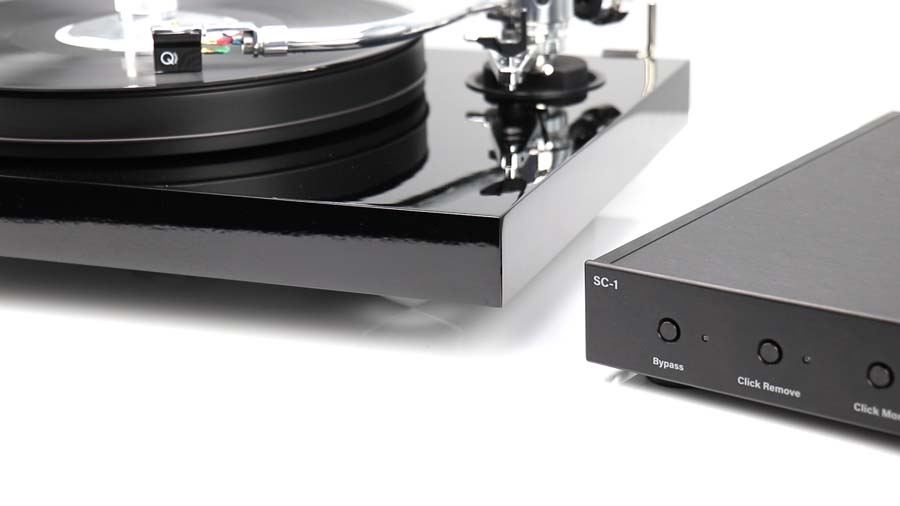
Turning to one of the first records I was given as a young child learning the piano, Grieg’s piano concerto played by Maura Lympany, someone who I actually got to meet before my teens, this record is mono and nothing is more annoying than listening in mono with stereo crackles. OK, I could switch my Manley phono-stage to “mono”, but that would mean getting up off my chair. With the SC-1 all the interference was removed, just leaving the background noise of the recording itself. What could have been assumed as a very slight reduction in the very top end was actually the fact that violins were sounding clearer and more forward in the soundstage. Using the device switched to “Click Remove” creates a very slight delay in audio due to the digital processing required, which meant lifting off the stylus at the end of the playing continues for a few milliseconds, and which I found entertaining!
Listening to the excellently engineered Dave Brubeck ‘A Cut Above’ album and the track “Forty Days”, the music starts with a very quiet ambient piano. With the SC-1 switched in I could now just concentrate on the music rather than the occasional crackles. The wide soundstage of the drumming that then joins in is slightly narrowed but lower bass was still as strong and the top ride cymbals sizzled away with no loss of top. Rachmaninov 2nd Symphony (Previn and the LSO, EMI) has a beautiful slow movement including luscious clarinet solo which was slightly more forward and improved my listening experience. Only the fact that a really bad scratch on the record that caused the music to continually repeat the same groove without the offending “pop” being audible, and sounding rather Steve Reich’ minimalism, I wondered if my stylus might get damaged if I were to continually play really bad records and not be able to hear that they were really too bad!
Mark Williamson Band “Get the Drift”, recorded in May 1980 was next on the list. This album sounds like it was recorded over a very short time, though I do love the Yamaha CS80 and PolyMoog synthesisers. This album tries but is not exciting at the best of times, one reason I played it, and also because it has a lot of scratches and wide soundstage. This was a band trying to sound “fashionable” but failing in my view. The music has lots of phasing and the SC-1 very slightly reduces this as it becomes marginally more central. What very little excitement there is in the music is very slightly lost in the process. I am not trying to belittle what the SC-1 can do, as I very much enjoyed using it, and the fact that the algorithms are able to be improved with a connection to the Ethernet makes this product even more desirable.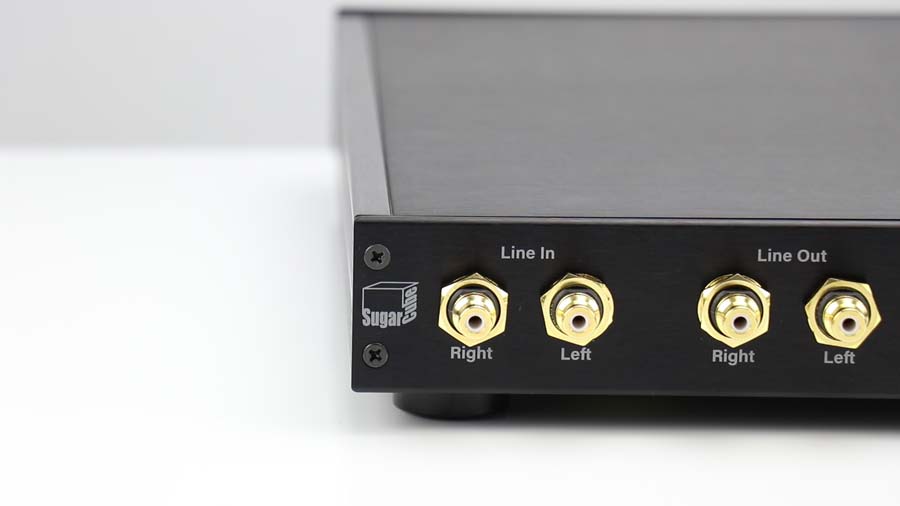
Finally to be played was one of the favourite groups from my youth, Supertramp ‘Breakfast in America’, and I am happy to own a demo version sent out to important broadcasters and reviewers just after being recorded in 1978 before being released the following March. Unfortunately, my copy has been well played and played-about-with by all accounts judging by the scratches on it, particularly side two. Luckily the SC-1 could turn it into a brand new record. Unfortunately, I did notice the top end wasn’t quite so bright and whilst Roger Hodgson’s incredible vocals were clearer I did sense the music as not being quite so brilliant, including a very slightly reduced bass. Levels were matched exactly between no-processing/processed, something I made sure during my review, but it just didn’t quite sound so energetic and the stereo width was slightly narrower. I found this latter point puzzling in my testing because a phono cartridge itself has only ~35db channel separation. However, one has to sum up the pros and cons, and I quickly came to the conclusion that the SC-1 would be the very best investment for my record collection.
CONCLUSION
Would I want to suffer playing vinyl through a 24bit DAC to get brand spanking new playout? Absolutely. SweetVinyl has hit upon a problem that no one has successfully remedied and come up with a product that magically mamaintainshe analogue performance, particularly vocals and violins, and gets rid of those horrible pops and crackles with virtually no detriment to the overall musical performance. Indeed, some music actually sounded better. And, for those virgin LPs that don’t need any processing, well, you can just switch off the digital technology.
AT A GLANCE
Build Quality: Well made, all aluminium construction and good use of components such as ESS DAC and gold plated RCAs.
Sound Quality: Whilst most of the music I played was as good as the original source, some complex music very slightly narrowed the soundstage. Some vocals and mid frequency instruments actually sounded warmer. Surprisingly good for 24bit/192kHz.
Value for Money: Priceless if you value listening to your records without the interruption of pops and clicks.
Pros:
- Improves your scratchy records admirably
- Doesn’t make records sound “digital”
- Has a defeat switch for you to use without processing
Cons:
- Can very slightly narrow soundstage on some records
- I wish the front panel button was a push-button to allow users to configure easily without using your phone/tablet
- The manual needs improving for set-up
Price: £1550
Janine Elliot
Review Equipment: Pre Audio t/t, AT33sa cartridge, Manley Steelhead Phono-stage, Krell KAV250a and Leak Stereo20 amplification, Graham Audio LS5/9 speakers with Townshend Supertweeters, Ecosse, Townshend and Nordost cables, Townshend rack.












































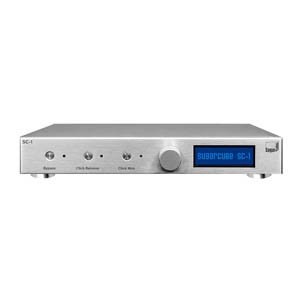
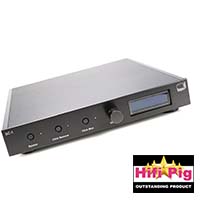



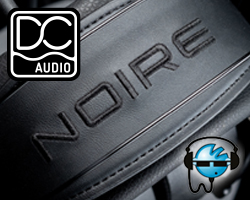










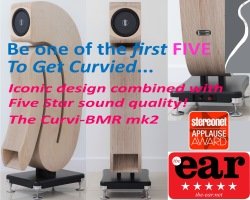















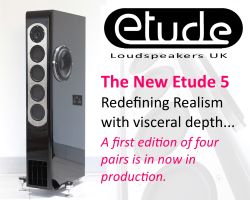



















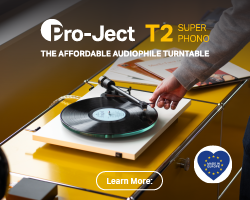















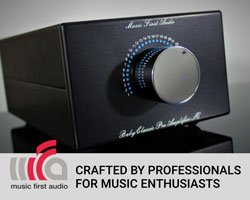




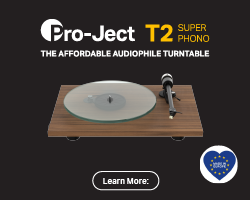







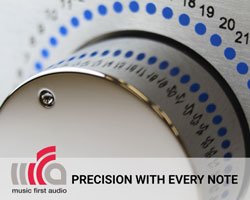












































You must be logged in to leave a reply.